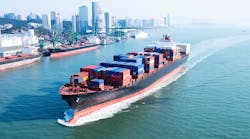Part 2 of a three-part series. Read Part I.
The future of U.S. manufacturing depends substantially on our success in eliminating our goods trade deficit, increasing manufacturing by 40% and adding 5 million manufacturing jobs at current U.S. productivity levels. In 2018, the number of U. S. companies reporting new reshoring and foreign companies reporting FDI (foreign direct investment) was at the highest level in recorded history. The continued increases in reshoring and FDI are largely based on greater U.S. competitiveness due to corporate tax and regulatory cuts, rising wages and prices in China and increased recognition of the total cost of offshoring.
Let’s compare and quantify the optimal government strategies that can improve U.S. price competitiveness to accelerate reshoring and reduce the trade deficit. At least initially, about 75% of the responsibility resides with the government, while the other 25% rests with companies. (We will propose companies’ actions in Part 3.)
Price Is Key
A recent survey by Plante Moran and the Reshoring Initiative asked manufacturers: What is preventing you from reshoring? The study found that about 70% of decisions to buy imports are price-driven. Conclusion: The U.S. has a $700 billion/year goods trade deficit primarily because we are not price-competitive. The problem is not just with China. The U.S. is not price-competitive with most other countries. We have a trade deficit with nine of our 10 largest trading partners, having a surplus only with the U.K. Companies will not massively embrace reshoring until they can do so without materially reducing profitability.
The magnitude of the problem can be quantified from Exhibit 1. China’s ex-works (EXW) price—the cost of goods sold not including transportation costs—averages 70% of the U.S.’s price. The U.S. is price competitive in only a small number of items (N on the chart)—those at or above 100% on the chart. The goods trade deficit is about 15% of the sum of: imports adjusted to U.S. price levels, $3.4 billion; and exports, $1.4 billion, total $4.8 billion.
The bar chart in Exhibit 1 would have to shift 18 percentage points to the right for 15% of the cases to be competitive (i.e., shift from below 100% to 100% or greater). Let’s call the needed shift 25% to allow for inevitable offshore price-cutting to retain market share, the one-time costs to shift to domestic sourcing and the lower price elasticity of exports. So, eliminating the trade deficit requires us to lower the U.S. price vs. the offshore price about 25%
Chinese Price, % of U.S.
Exhibit 1 | Source: Reshoring Initiative TCO Estimator user data
Government Actions
President Trump is using a variety of controversial tariffs to accelerate the reshoring and FDI trends and balance the goods trade deficit. We support his objectives. The tariffs may convince other countries to moderate aggressive trade practices or they may fail. Yet even the most optimistic outcomes will not balance the trade deficit.
A more effective strategy would call for leveling the playing field by improving the terms of trade by actions such as: lower USD, adding a VAT (value added tax), making duty levels reciprocal, and improving the skilled workforce.
The Reshoring Initiative has created a Competitiveness Toolkit, Exhibit 2, to select the optimal actions that will bring back the desired number of manufacturing jobs with the least collateral damage: WTO, inflation, uncertainty, etc. The actions will also keep jobs from leaving and will increase exports.
The Competitiveness Toolkit outlines and quantifies actions that can be implemented solely in the U.S. and are not dependent on cooperation by other countries.
Our proposed actions collectively provide twice the impact needed (48%/25%) to eliminate the goods trade deficit, and would generally not be grounds for retaliation or make some domestic producers more competitive at the expense of others, as with the steel tariffs.
Exhibit 2 | Reshoring Initiative Competitiveness Toolkit
The administration can target a desired reduction in the trade deficit/increase in manufacturing jobs and use the Jobs/Price Matrix, Exhibit 3, to identify the required percentage change in price competitiveness.
For example, we estimate from Exhibit 1 that 1 million jobs would require a 5 percentage-point improvement in U.S. pricing and 10 years to achieve. We recommend the changes be committed for the long term but phased in over five or more years so companies have time to increase physical capacity and, even more critically, to recruit and train the needed skilled workforce. The estimates in Exhibit 3 assume that most companies continue to make their sourcing and siting decisions on the basis of ex-works price rather than TCO (Total Cost of Ownership). Otherwise, the required price reductions would be 10 percentage points lower, as will be discussed in part 3.
Exhibit 3 | Source: Reshoring Initiative
We believe the estimates are conservative. The percentage price differences were calculated vs. China, which is responsible for about 20% of our goods imports, half of our trade deficit and the majority of reshoring and FDI. The elasticity with Europe, Japan and Canada will be substantially higher since the price differences are much smaller and the governments less willing to fight to protect trade surpluses.
Secondarily, the government can modify a wide range of programs to put more emphasis on reshoring: shifting resources, refining tax policy and training in the use of tools such as the TCO Estimator and Cost Differential Frontier (CDF). We recommend:
R&D tax credits: Delay the tax credit until a company’s manufacturing for the U.S. market has taken place in the U.S. for at least five years. Why subsidize the work of five U.S. design engineers for two years to develop products that will be manufactured by hundreds offshore for 10 years?
EB-5 program of investment visas: Almost all of the investment now goes into restaurants, housing and other non-tradable services. Only 1.6% goes into manufacturing. Provide preferential terms for manufacturing, which we need more of in the U.S. than restaurants. The program currently has a preference for locations—why not for manufacturing? Directing half of the funds into manufacturing would add 10,000+ jobs/year. Many investors wait years to invest. Move manufacturing to the head of the line.
Opportunity Zones: Provide a preference for manufacturing investment.
IC-DISC: Include reshoring with a program comparable to the 20% tax rate reduction exporters earn.
TAA (Trade Adjustment Assistance): These centers could proactively help companies use TCO to save jobs or win jobs from importers rather than reacting to jobs lost to imports. Make TCO use a requirement for companies before announcing layoffs due to imports.
MEP and SelectUSA: Increase emphasis on reshoring.
Training: Promote and fund the use of and training in TCO to encourage more accurate sourcing and siting decisions. Focus on supply chain managers and lean practitioners.
Buy American: Require all government purchasing departments and all suppliers of material to any federal, state or local government to use TCO before sourcing anything offshore. Doing so would prevent the buyers from both spending too much and hurting the U.S. economy.
Help companies predict future costs: Forecast China’s future tax burden and manufacturing cost to overcome pollution, safety, safety-net and retirement problems. Publicize the results so companies can predict their future costs if they stay or invest in China.
Supply chain gaps: Identify and fill key supply chain gaps by promoting opportunities to companies, venture capital firms and current foreign suppliers. The Reshoring Initiative has a system for identifying such gaps.
Mexico: Cooperate to shift work from Asia to North America. Make Mexico’s location and cost structure an asset instead of a liability, since Mexican exports have about 40% U.S. content. Drive enough work into Mexico to raise wages to the point that the U.S. stops losing jobs to Mexico.
The government needs to start leveling the playing field. Once companies see government’s commitment, they will get onboard. In Part 3 we will discuss the corporate behavior that can improve actual and perceived U.S. price competitiveness to accelerate the reshoring trend and reduce the trade deficit.
Harry Moser is the founder/president of the Reshoring Initiative.






